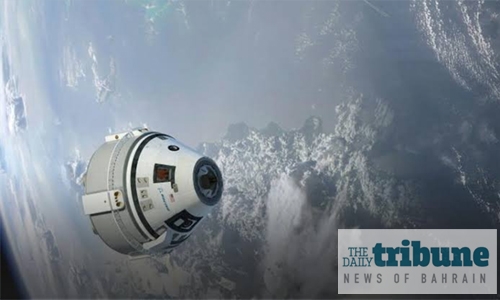After mission failure, Boeing spacecraft lands in New Mexico
Boeing’s new Starliner unmanned spacecraft returned to Earth on Sunday, landing in the New Mexico desert in the United States six days early after a clock problem prevented a rendezvous with the International Space Station. Images broadcast by NASA showed the spacecraft touching down safely in the dark after a descent slowed by three large parachutes.
The Starliner capsule was launched Friday from Cape Canaveral in Florida, but shortly after separating from its Atlas V launch rocket, its thrusters failed to activate as planned, preventing it from reaching an orbit high enough to meet up with the ISS. The space station orbits at an altitude of about 400 kilometers (250 miles) above sea level.
The flight -- carrying only a dummy -- was meant to be a final dress rehearsal before a crewed flight. After calculating that the craft had burned too much propellant for several minutes, Boeing and NASA were forced to guide the Starliner back to Earth without fulfilling its planned mission.
Jim Chilton, senior vice president of Boeing’s space and launch division, told reporters that “we started the clock at the wrong time.” Starliner’s failure was the latest serious setback for Boeing, which is still reeling from two fatal crashes of its 737 Max airliner. The crashes, in October 2018 in Indonesia and in March 2019 in Ethiopia, claimed a total 346 lives.
Boeing plans to suspend production of the plane in January.
Successful re-entry
NASA administrator Jim Bridenstine insisted that the space mission was not a complete failure. “The NASA team and the Boeing team have been working hand in glove to accomplish as many of the test objectives as we can,” he said before the landing. Starliner was able to establish a communications link with the ISS, and to test in space its docking mechanism as well as its solar panels, batteries, thrusters and heat regulation system.
Chilton said the vehicle’s status was “really excellent.” The Starliner re-entered the atmosphere at 25 times the speed of sound, with its thermal shield resisting the intense heat created by friction with the atmosphere. In a test in November only two of the three parachutes opened, although they proved sufficient for the landing. “The entry, descent and landing is not for the faint of heart,” Chilton said earlier.
NASA will have to decide whether to carry out another test flight or to trust that the vehicle is safe to carry astronauts. Starliner’s first crewed flight had been scheduled for early 2020 -- a much-anticipated development ever since NASA sent up its last space shuttle in 2011.
Another vehicle, the Crew Dragon, has been developed by SpaceX corporation for NASA. It is expected to also be ready for launch next year. NASA has committed to pay $8 billion to Boeing and SpaceX, which in return are to deliver six trips carrying four astronauts each from now to 2024.
Related Posts

